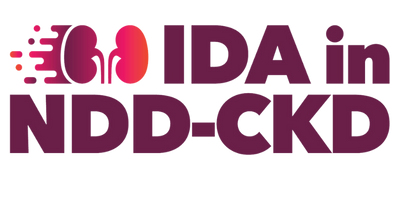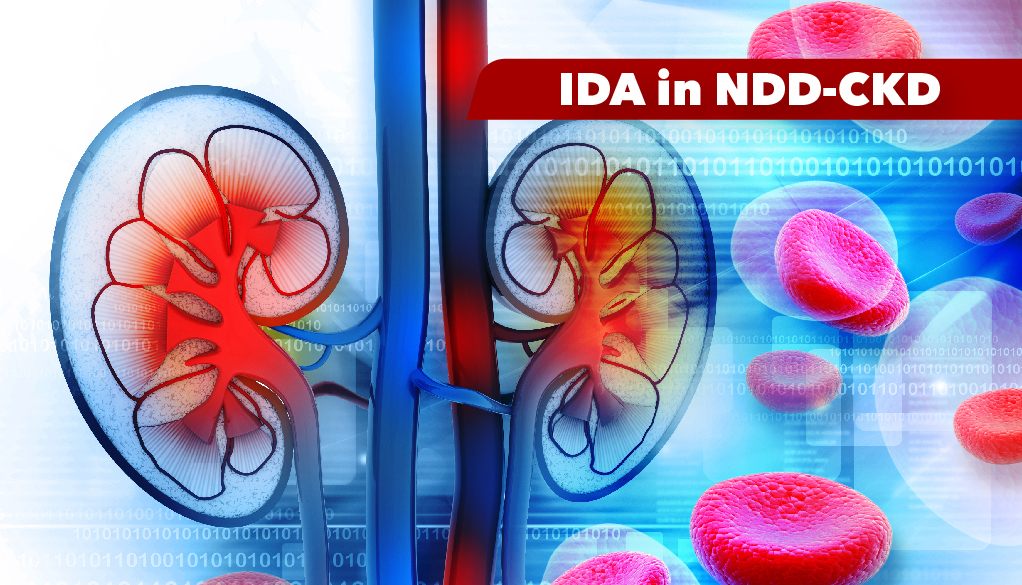KDIGO (Kidney Disease:Improving Global Outcomes) are developing an update to their 2012 Clinical Practice Guideline for Anemia in Chronic Kidney Disease (CKD). The guideline is intended to be used by a broad group of patients with CKD and anemia. Its objective is to produce a valuable resource for clinicians offering useful recommendations, based on a thorough examination of available evidence, complemented by practice points and infographics. The new guideline will also aim to propose research recommendations for areas where there are gaps in knowledge.1
OVERVIEW OF THE 2012 KDIGO CLINICAL PRACTICE GUIDELINE FOR ANEMIA IN CKD
Clinical practice recommendations for managing anemia in CKD have been historically contradictory and perceived to be influenced by industry. The publication of the 2012 KDIGO guideline that updated and informed clinical practice in this area was therefore welcomed.2
The 2012 KDIGO Clinical Practice Guideline for Anemia in CKD was developed to enhance the care and outcomes of patients with CKD around the globe.3 The 2012 guidelines provide comprehensive evidence-based recommendations to aid clinicians.3 The main difference in the 2012 KDIGO guidelines compared to previous guidance is the use of the lowest dose of erythropoiesis-stimulating agent (ESA) to prevent blood transfusions and the abandonment of Hb concentration targets.4 There are 47 recommendations in the KDIGO guideline, all with differing degrees of supporting data.2
While intravenous (IV) iron is useful in the setting of iron deficiency, IV iron may be associated with some risks.2 The KDOQI (Kidney Disease Outcomes Quality Initiative) commentary on the guidelines states the degree of caution expressed by KDIGO, around IV iron, is not supported by the available evidence.2 For children and adults, KDOQI supports individualizing therapy to treat anemia in patients with CKD.4 It is noteworthy that the KDIGO guidelines emphasize weighing the advantages and disadvantages of iron therapy with ESAs.2
The evidence suggests that patients with CKD should aim for hemoglobin (Hb) target values between 10 and 11.5 g/dL rather than levels >13 g/dL, which have the potential to be harmful.2 The KDIGO guidelines advise using injectable iron over oral iron supplements because oral iron supplements are inadequate.2 Since IV iron cannot be provided in general practice due to the requirement for monitoring, this presents a challenge for most general practitioners. The KDIGO guideline also suggests using iron indices to help direct therapy, considering the risk of infection from excess iron and inadequate ESA response.2
Changes in symptoms, such as a decrease in fatigue in an individual patient, rather than a hemoglobin concentration threshold, are a better measure of successful improvement.2 Importantly, the first section of the KDIGO guideline considers the diagnosis and evaluation of anemia in later stages of CKD (Stage 3a and beyond), where anemia is most common.2 The guidelines, while not graded, include protocol-type methods to the frequency of testing as well as a logical approach to diagnosis that is pertinent and suitable.2 It is expected that the updated guidelines will include newer evidence-based recommendations to improve aid to primary care clinicians and provide even better outcomes to patients.
GUIDELINES ON TREATMENT OF IRON-DEFiCiENCY ANEMIA IN NON-DIALYSIS-DEPENDENT CHRONIC KIDNEY
Recommendation for patients with CKD and anemia 1 | Goal during supplemenation 1 | |
| KDIGO Guidelines | Trial of Iron if the TSAT is ≤ 30% and serum ferritin is <500 ng/mL | Remain below TSAT of 30% and ferritin of 500 ng / mL |
| ERBP Guidelines | Trial of Iron if the TSAT is ≤ 20% and serum ferritin is <100ng/mL | Remain below TSAT of 30% and ferritin of 500 ng / mL |
| NICE Guidelines | Remain below ferritin of 800 ng/mL | |
| Renal Association Guidelines (2017) | Remain below ferritin of 800 ng/mL |
TSAT, transferrin saturation; KDIGO, Kidney Disease: Improving Global Standards; ERBP, European Renal Best Practice; NICE, National Institute-for Health and Care Excellence
KEY TAKEAWAY OF THE 2012 KDIGO CLINICAL PRACTICE GUIDELINE FOR ANEMIA IN CKD
The KDIGO guidelines can help primary care clinicians manage patients with stage 3a and 3b CKD to investigate and rule out alternative reversible causes of anemia in the earlier stages of CKD when CKD-associated anemia is most likely to develop.2
In conclusion, the key KDIGO guideline recommendations for primary care clinicians and other non-nephrologist clinicians are to:2
• Consider CKD in any diagnostic workup of anemia.
• Acknowledge that injectable, rather than oral iron is the rst-line treatment for CKD-associated anemia.
• Consider ESA use only when the Hb level is about 10 g/dL — refer the patient to a nephrologist at that time.
• Be appropriately cautious with the use of transfusions (blood and platelets) if transplantation potential exists.
References:
- KDIGO website. Anemia in CKD. Date accessed September 6, 2022.
https://kdigo.org/guidelines/anemia-in-ckd - MacGinley RJ, International treatment guidelines for anaemia in chronic kidney disease – what has changed? Nephrologist and Convenor of Medicine, doing:10.5694/mja13.10538
- Moist LM. Commentary on the 2012 KDIGO Clinical Practice Guideline for Anemia in CKD – Canadian Society of Nephrology. AM J Kidney Dis. 2013;62(5):860-873
- Kliger AS. KDOQI US Commentary on the 2012 KDIGO Clinical Practice Guideline for Anemia in CKD – Canadian Society of Nephrology. AM J Kidney Dis. 2013;62(5):849-859
- Batchelor EK, Kapitsinou P, Pergola PE, et al. Iron Deficiency in Chronic Kidney Disease: Updates on Pathophysiology, Diagnosis, and Treatment. J Am Soc Nephrol. 2020;31(3):456-468. doi: 10.1681/ASN.2019020213. Epub 2020.
- After-Gvili A, Schechter A, Rozen-Zvi B. Iron Deficiency Anemia in Chronic Kidney Disease. Acta Haematol. 2019;142(1):44-50. doi: 10.1159/000496492. Epub 2019


